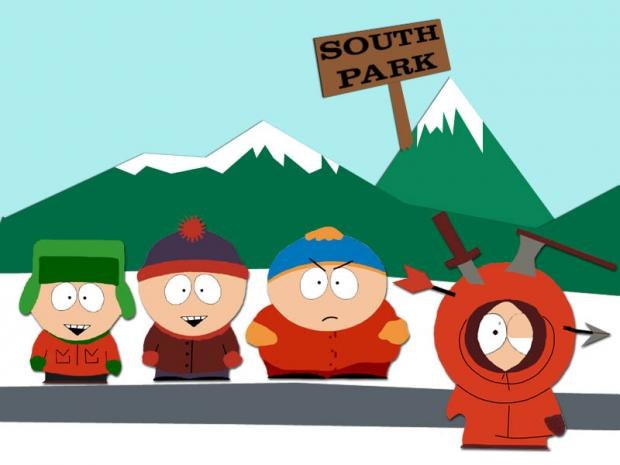Humor is one of the most
fundamental affinities that unite people across time, age, and language. Its no
coincidence that ancient Greeks believed humors were bodily fluids that needed
to be balanced to control health and emotion. Throughout history comedy has
developed, improved, and continually changed with events of the current time
period. And since the dawn of television uniting us across time and distance,
this technological advancement opened a new portal for endless comedic
possibilities. With the beginning of cable creating inexorable fragmentation of
niche audiences across the hundreds television channels we have today, Comedy
Central has consistently appealed to its main audience market throughout its history
of consistent programming and creative content; and through these devices
create trends that encourage regular audience engagement.
Conceived
in 1990 by Time Warner Cable, The Comedy Channel, as it was called then, set
out to do what no other cable channel attempted to do – to be exclusively
comedy, 24 hours a day (MediaWiki). In the first couple years as a channel, The
Comedy Channel competed with Viacom’s Network Ha!. During this time The Comedy
Channel focused on material that was generally low-budget, original and unusual
series, such as Mystery Science Theater
3000, a wacky cult show featuring a man trapped in a space station by an
evil scientist, or casual variety talk shows such as The Sweet Life with Rachel Sweet, or Night After Night with Allan Havey, whereas Ha’s Network focused
mostly on re-runs of sitcoms and sketch comedy, as well as full length showings
of Saturday Night Live (Boone). After
two short years, Viacom bought out Time Warner, merging the two networks, and
recreating their image to become Comedy Central as we know and love today
(MediaWiki).
But
before we get into the trends of the network, we must first discuss Comedy
Central’s audience and the key demographic for television. In terms of general
television, most key demographic group lie within the age range of 18 – 49
(Weinman), where the primary audience is between 24-30, and the secondary
target being 18-69 (Buttry). Meaning, the audience that a network is aiming to
appeal to is typically young adults who “have been TV’s target demographic for
decades, because they’re thought to have less brand loyalty and more disposable
income” (Weinman). Comedy Central takes it one step further, focusing generally
on middle class adults, specifically males (MediaWiki). They have consistently
captured this key demographic throughout their time as a cable network through
creating their brand via content and not until recently, social media.
Their appeal to
white, middle class men, an age 18-49 is apparent through their programming.
Though women account for approximately 40% of the demographics that make up the
audience, it’s the remaining 60% of the male population that the programming
predominantly appeals to (NY Interconnect). Just watch several of the shows on
Comedy Central and the trend becomes apparent. The programming is overrun by
crude, audacious, irreverent humor, which is consistent throughout the networks
entire history. One such example is the loud, sexually charged, stereotypically
masculine spectacle, The Man Show, hosted
by Jimmy Kimmel and Adam Carolla (Comedy Central 1999-2004), where they feature
attractive women in revealing clothes as the “Juggy Dance Squad” at the
beginning of every show. There is an excess of other examples throughout the
network’s show history, but other notables include South Park, which is one of the most popular shows to run on Comedy
Central. First created in 1997, South
Park is considered the show that put Comedy Central as a leading cable
network into the 21st century (Comedy Central). The obscene, dark,
and immaturely hilarious cartoon captured the network’s key demographic, while
additionally achieving the highest rating at a 3.8 in its first season
(Carter). South Park is still a top
show on the network today, continually creating adventures for the characters
based off of humor of current events.
Though young white
males aren’t particularly distinctive for marketing purposes, this largest
“niche audience” is a great target for Comedy Central. The network assumes that
men are obsessed with offensive, sexual, and immature material, which allows
their shows to be more overt, speaking to that particular demographic that is
likely to agree with them, and more often than not, find the content of
programs funny (Zimdars). This is how the trend of “male oriented” material is
created, and why it continues to be reinforced through current shows as well.
Shows featured on
Comedy Central today included the likes of Tosh.O,
Workaholics, and Bro-Dependent, all of which are obviously marketed toward the key
male demographic. Between the shamelessly articulated rape jokes on Tosh.O, and Adam and Ders being “fully
torqued” on Workaholics (S1E9, 2011),
to the very obvious appeal of “two yoked and tanned best bros” on Bro-Dependent, one can see that the
content does not carry major differentiation when it comes to diverging from
audience appeal.
 Though the network
continues to trend as a male-oriented content provider, in the past decade
Comedy Central has seen in increase in women-featured shows as well. Shows such
as The Sarah Silverman Program, or
more recently, Inside Amy Schumer, take
on issues of abortion, racism, sex, and relationships, but do so through a
tomboyish, backward way. One would think incorporating women in the show line
up would signal turn toward a more equalitarian marketing direction, these
women-featured shows aren’t actually women oriented at all. Both Sarah
Silverman and Amy Schumer are traditionally attractive women who will hold a
male’s gaze, but still are unafraid of dropping “F*** bombs” or using obscene
humor. Since the second season renewal of Inside
Amy Schumer, it has been considered “one of Comedy Central’s highest rated
shows – particularly with young men, a demographic TV has the hardest time reaching”
(Zurawik). Regardless, though these shows feature women as main characters,
they still tailor their shows to the male audience.
Though the network
continues to trend as a male-oriented content provider, in the past decade
Comedy Central has seen in increase in women-featured shows as well. Shows such
as The Sarah Silverman Program, or
more recently, Inside Amy Schumer, take
on issues of abortion, racism, sex, and relationships, but do so through a
tomboyish, backward way. One would think incorporating women in the show line
up would signal turn toward a more equalitarian marketing direction, these
women-featured shows aren’t actually women oriented at all. Both Sarah
Silverman and Amy Schumer are traditionally attractive women who will hold a
male’s gaze, but still are unafraid of dropping “F*** bombs” or using obscene
humor. Since the second season renewal of Inside
Amy Schumer, it has been considered “one of Comedy Central’s highest rated
shows – particularly with young men, a demographic TV has the hardest time reaching”
(Zurawik). Regardless, though these shows feature women as main characters,
they still tailor their shows to the male audience.
Throughout
its time as a cable channel, Comedy Central has reliably offered programming
that appeals to the key media demographic of the young white male. With
fragmentation of television, offering content tailored to this niche audience,
it creates a trend that can be tracked across the network’s program history.
Early shows such Mystery Science Theater
3000, and The Man Show, to
today’s programs like Tosh.O, and Workaholics, Comedy Central consistently
uses the same “boyish” comedy through new and innovative types of content and
programming, while still retaining its primary audience as the main supporter
of the network.
Works Cited
Anderson, Blake, Adam DeVine,
Anders Holm, Kyle Newacheck, Connor Pritchard, and Dominic Russo.
"Workaholics." Workaholics. Comedy Central. 2011. Television.
Boone, Brian. "The Origin
and Early Programs of Comedy Central | Splitsider." Splitsider.
Splitsider, 11 Jan. 2012. Web. 29 Apr. 2014.
Buttry, Jonathan. "Creative
Brief & Style Frames." Comedy Central. Comedy Central, n.d.
Web. 28 Apr. 2014.
Carolla, Adam, Daniel Kellison,
and Jimmy Kimmel. "The Man Show." The Man Show. Comedy
Central. 1999. Television.
Carter, Bill. "Comedy
Central Makes the Most of An Irreverent, and Profitable New Cartoon Hit." The
New York Times. The New York Times, 09 Nov. 1997. Web. 28 Apr. 2014.
"Comedy Central." New
York Interconnect. New York Interconnect, Mar. 2012. Web. 28 Apr. 2014.
"Comedy Central." Television
& American Culture. Middlebury, 3 Dec. 2010. Web. 029 Apr. 2014.
Silverman, Sarah, Rob Schrab,
and Dan Harmon. "The Sarah Silverman Program." The Sarah Silverman
Program. Comedy Central. 2007. Television.
Tosh, Daniel, and Mike Gibbons.
"Tosh.O." Tosh.O. Comedy Central. 2009. Television.
Weinman, Jaime J.
"Television's Mid-Life Crisis." Maclean's 125.27 (2012): n.
pag. Academic Search Elite. Web. 28 Apr. 2014.
Zimdars, Melissa.
"Television Criticism." Niche Audiences. Adler Journalism Building,
Iowa City. 2 May 2014. Lecture.
Zurawik, David. "Comedy
Central Renews 'Inside Amy Schumer'" Baltimore Sun. Baltimore Sun,
28 May 2013. Web. 29 Apr. 2014.



Interesting blog. I liked the background knowledge of how Comedy Central became a major cable channel. I am a personal fan of most of the shows you brought up in conversation. I was a little surprised you did not bring up "Broad City." I think that show goes along with the girl-bro humor, with two lead characters being women. Great blog!
ReplyDeleteVery interesting look at Comedy Central as a whole rather than a specific show that is featured on the network. I really like how you pointed out that women only make up 40% of the target demographic and how shows like South Park and the Man Show are filled with crude, sexist, racist humor that would be off-putting to most female viewers, which is completely true. Not many of my female friends enjoy some of the more "male-dominated" shows on CC like I do. I especially enjoyed the part of your blog where you discuss the new female dominated shows with Sarah Silverman and Amy Schumer and how these women aren;t stereotypical "dumb blondes" and are actually funny, intelligent women who are fun to watch.
ReplyDelete